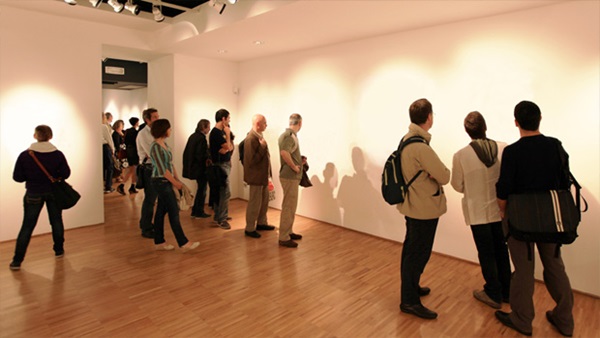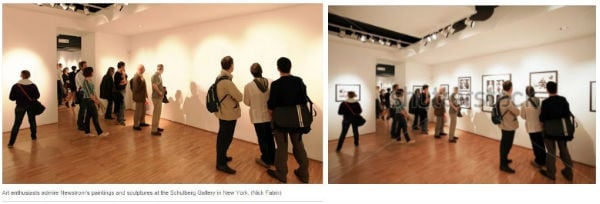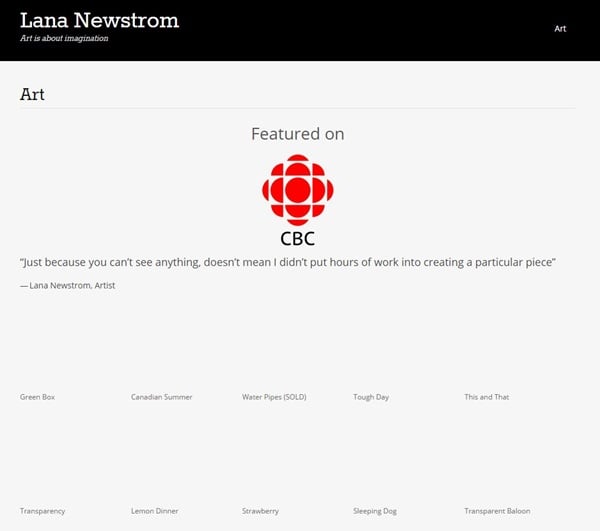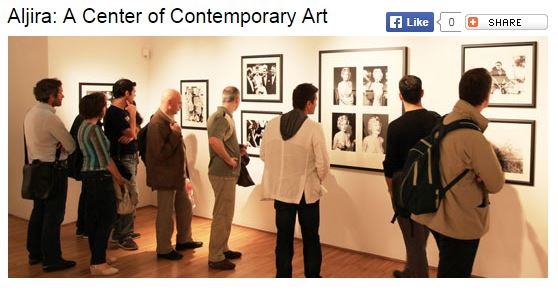Art & Exhibitions
News Scandal Erupts Over Fake “Invisible Art” Stunt
The viral hoax refuses to disappear.

The viral hoax refuses to disappear.

Eileen Kinsella


At left: Screenshot from the CBC’s article “New York artist creates ‘art’ that is invisible and collectors are paying millions;” At right: Watermarked image from Shutterstock, with caption reading, “MILAN, ITALY – JUNE 16, 2010: People looking at Phil Stern photography collection at Forma Photography Foundation June 16, 2010 in Milan, Italy.”
Plenty of people—even art people—were expressing their outrage recently when word broke of a New York artist making her name selling “invisible art.” The works exist solely in the imagination of the artist but were nonetheless priced at upwards of $35,000 each.
To be fair, in this day and age, it’s hard to tell what news is real and what is satire, and this was a pretty poker-faced example of the latter. But there were definite clues, even for those who didn’t know that the source of the image was a Canadian radio show that specializes in spoofs.
The artist in question does as of this moment have both a personal website and a (newly created) Twitter page. The former, LanaNewstrom.com, is actually pretty great, showcasing such masterpieces as Canadian Summer and Sleeping Dog, each one illustrated with a completely empty space. The page continues to draw a stream of wrathful comments, which “Newstrom” is dutifully engaging with, defending her reputation valiantly and offering to make original new invisible artwork for skeptics in exchange for a contribution to the Lifeboat Foundation.

Screenshot from LanaNewstrom.com
But how do you tell the difference between a fake art news scandal and the ordinary art world outrage?
First off, “Lana Newstrom” is a name we had never heard of despite the fact that she could be the “greatest artist alive working today,” according to her dealer, and the fact that she was described as creating a sensation. Yawn. A cursory Google search turns up no results other than the original CBC News report. We had also never heard of art dealer “Paul Rooney,” the “Schonburg Gallery,” or cranky critic “Morris Header,” who lambasted Newstrom for being lazy as well as unoriginal (which she would be, were she real).
Then there were the Christopher Guest-like flourishes in the radio report itself, supposedly taped at the preparation for and opening reception of the show, the latter of which drew an unnamed Who’s Who of art world people. The dealer can be heard telling an art handler that one invisible sculpture is “really heavy” and that he’s probably going to have to lift it with his legs. It’s actually very funny.
There’s also the moment when Newstrom describes making a work but says, “essentially I have to imagine what kind of medium I’ll work in and what materials I imagine.” In describing the process of making a painting, she says “the water is out because I forgot to pay the bill, so I have to imagine calling the water company and telling them I did in fact pay my bill last month.” And her description of her experience before she hit the big time is also hilarious: “I did painting, I did sculpture, installation, mod-podge but no one was biting. No galleries would take my work.”
One more tip off: There were no real installation shots of the work. A single image of about a dozen people with their backs turned to the camera, staring, seemingly intently, at blank gallery walls made the rounds (which, if you think about it for just a second, is a fairly funny joke). Google’s Reverse Image search reveals the photo is a doctored stock image from a Bert Stern show in Milan, Italy from a few years ago.

In fact, images from the same Shutterstock/Bert Stern series can be found all over the web, illustrating the generic “people looking at art” concept. The same image appears to illustrate the Tampa Museum’s “Groups and Tours” section, an Irish scholarship program, and an entry for New Jersey–based Aljira art center in Delta’s in-flight magazine.
Writing about the dust-up in the Guardian, the newspaper’s publicity desperate critic Jonathan Jones hypothesized that “people love to lampoon a credulous art world but the reaction to the fake invisible work of ‘Lana Newstrom’ shows… how much we hate the rich.” Jones, who doesn’t much like contemporary art himself, added that he could see why so many people fell for it, “especially having just covered the Turner Prize.” He cites previous prize winners such as Martin Creed, who won for lights going on and off in an empty room. Okay Jonathan, whatever you say.
Jones further points out that the fictional Newstrom “is not the radical artist she has been taken for. Her work is old hat. I am yawning, it is so retrograde and familiar—just another rehash of ideas that go back to the 1950s. Ever hear of John Cage?” Jones makes what he thinks is an important distinction here: “The reason CBC’s joke story had legs is not so much that we want to laugh at contemporary art, as that we are so shocked and repelled by the art market.”
At any rate, the fake news story gained enough traction that the conspiracy theory debunking site Snopes.com saw fit to weigh in, giving the full context for those who are not aficionados of Canadian radio programming:
CBC’s ‘This Is That’ program is hosted by two comedians, Pat Kelly and Peter Oldring, who fabricate stories satirizing current affairs as a spoof of public radio: This Is That is a current affairs program that doesn’t just talk about the issues, it fabricates them. Nothing is off limits—politics, business, culture, justice, science, religion—if it is relevant to Canadians, we’ll find out the ‘This’ and the ‘That’ of the story. Each week, [the hosts] introduce you to the voices and stories that give this country character in this 100 percent improvised, satirical send-up of public radio.
Maybe the real story here is that people just do not get the Canadian sense of humor.